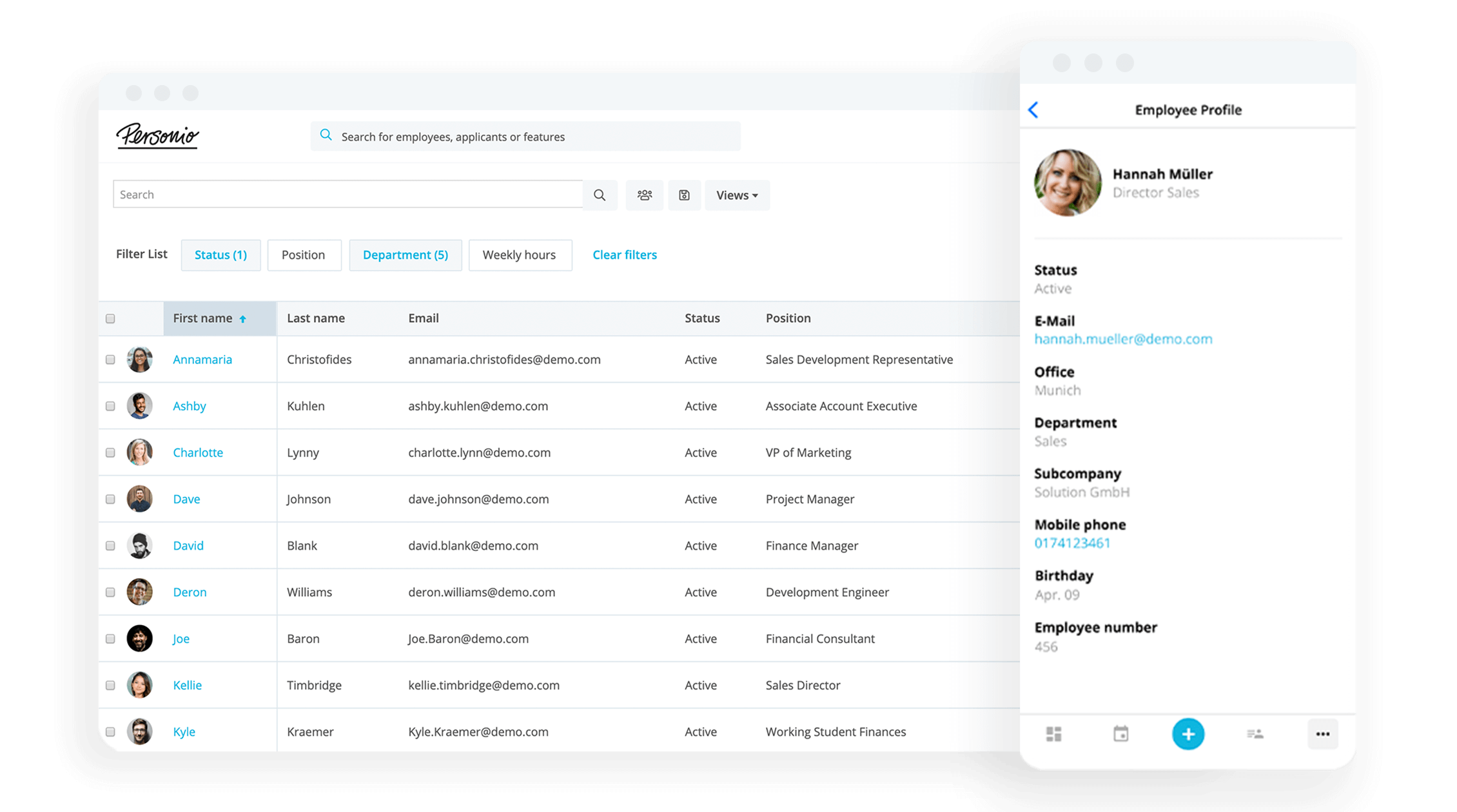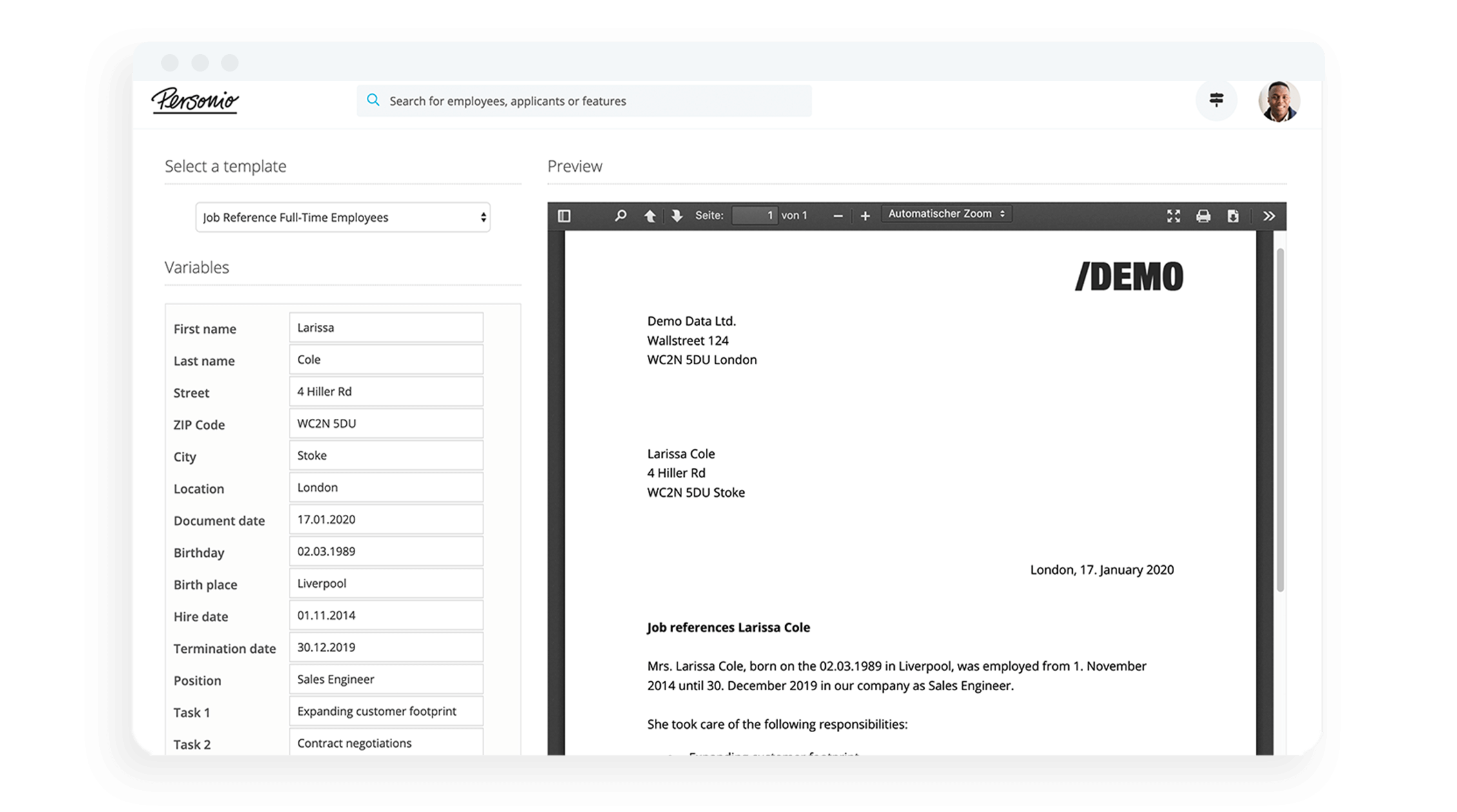Staff Disciplinary Hearings: How Should HR Manage Them?

What is a staff disciplinary hearing and why does it matter? All businesses face problems with employee behaviour from time to time. Most can be resolved informally. On rare occasions, though, behaviour escalates to the level of breaching workplace rules.
In these cases, HR may be tasked with organising a disciplinary hearing. These formal meetings between employer and employee to discuss allegations of misconduct can be uncomfortable and nerve-racking. So, it is important that HR manages the process fairly and efficiently for all involved. Here is how to do it.
How is your organization currently handling employee performance? Here’s how it works with Personio.What Is The ‘Disciplinary Procedure’ for Employees?
To be clear, disciplinary hearings are just one step in a disciplinary procedure. This overall procedure is a company’s defined process for handling perceived employee misconduct. It is also one of eight key areas of UK employment law.
According to Acas guidelines, disciplinary hearings are arranged after what is known as the ‘investigation stage.’ This is the phase during which the employer tries to find out as much about the case as possible.
Read our full breakdown of employment law in the UK right here.
What Is A Disciplinary Hearing?
Disciplinary hearings are not a box-ticking exercise (nor are any of the steps). They serve a vital role of bringing fairness and transparency to the disciplinary process. This is in order to determine whether disciplinary action needs to be taken against an employee.
Hearings are done to establish the facts of the case, not to put the employee on the spot. They are a chance for both sides to state their cases, exchange information, and ask questions in a structured and balanced way.
Keep in mind that, like all parts of a disciplinary procedure, hearings are designed to help organizations operate effectively and in line with their aim and values.
Furthermore, they reinforce standards of performance and let management and employees know that breaches of workplace rules will be dealt with consistently and legally. This even includes the dismissal of team members when a case merits it.
Employee attrition is a vast topic. Click here to read our guide to understanding attrition rates.
Keep Employee Information In One Place

Personio’s Digital Employee Files allow you to safely store employee information, from important documents to agreements and even disciplinary-related documents, in one, GDPR-compliant place. Make use of it for your org today.
Centralize Your Employee DataHow Should HR Prepare for a Disciplinary Hearing?
One of HR’s main goals should be to manage a disciplinary hearing that is efficient, fact-based, and smooth. That means preparing well beforehand.
This checklist shows the main activities HR needs to focus on before a hearing:
Gather all documents, including witness statements, disciplinary records, and any other employee records pertinent to the case.
Make available to the employee any documentation he or she requests, if appropriate. Accused employees may submit evidence and call witnesses during the hearing, too.
Arrange a private room for the hearing where there will be no distractions. Consider alternative arrangements for disabled employees or if, for any reason, the employee cannot attend the hearing as planned.
Organise a notetaker for the hearing. Ideally, this is another employee who is not involved in the case. Decide which HR representative will attend.
Organise a chair as well. This person is usually a manager who is also not involved in the case.
Consider what defense or explanations the employee may offer and be prepared to respond to those.
Organise witnesses to attend the meeting. Those who cannot or are unwilling to attend may submit written statements.
Create an agenda of proceedings that will be followed at the hearing.
From the very beginning of a disciplinary hearing, HR should notify an accused employee of the entire process and what is to be expected (at each stage).
The employee, therefore, should not be surprised when being asked questions as part of the investigation or when being called to attend a disciplinary hearing. A follow-up hearing should be organised as soon as possible after the investigation has been wrapped up.
How Do You Invite An Employee to a Disciplinary Hearing?
HR’s first order of business in arranging a disciplinary hearing is to invite the employee in question and other participants.
As we stated above, hearings should be scheduled soon after the end of the investigation. But they should also be arranged to allow the employee enough time to prepare. Depending on the situation, around five working days in advance should be sufficient.
HR should submit an invitation, in writing, to the employee that includes:
Date, time, and location of the disciplinary hearing
List of meeting attendants
Information about the employee’s right to a companion
The allegations of misconduct against the employee
Witnesses to the alleged misconduct
A copy of the company’s disciplinary policy
Evidence yielded by the investigation
An explanation of potential outcomes and consequences of the hearing
Click here to learn more about issuing a written warning to an underperforming employee.
The Right To Be Accompanied
An accused employee has the right to bring a companion to the disciplinary hearing, provided that this person is a:
Workplace colleague
Company trade union representative who has been trained to be a companion
Trade union official
The employee must notify HR in advance of the hearing that a companion will be there and the name of the person.
The role of the companion is also defined. That person is allowed to:
Address the hearing in order to sum up the employee’s case
Confer with the employee during the hearing
Respond on behalf of the employee to any opinions expressed at the hearing
Ask witnesses questions
That said, the companion may not answer questions on behalf of the employee.
How Do You Conduct A Disciplinary Hearing?
Of course, disciplinary hearings may vary in procedure and length. Below, though, is an outline of the stages of a typical hearing.
On the employer’s side, there is the chair, the notetaker, witnesses, and an HR representative, whose job it is to ensure the company disciplinary policy is adhered to.
The chair opens the meeting, briefly introduces the case, introduces the attendees and their various roles, and outlines the procedure that will be followed.
Following that, the chair outlines the allegation and the evidence gathered in the case.
The employee responds and presents his or her side of the case. During this process, the employee may call witnesses, introduce evidence, and ask questions.
There is a general discussion and opportunity for questions from both sides. Employers might ask if the employee has an explanation for the misconduct. Employees might ask to have rules or witness statements clarified. This part of the hearing is intended to raise all the facts.
The chair provides a summary of the discussion, including the misconduct allegation, main arguments, and evidence. The employee may also be invited to give a closing summary. The hearing is concluded.
Remember: A disciplinary hearing is not the forum for deciding follow-up disciplinary actions, such as termination or a written warning. This all happens later, once the results of the hearing have been taken into consideration.
Tips for a Fair Disciplinary Hearing
Despite good planning, disciplinary hearings might become heated and emotional. A certain level of this is okay. But, if the employee is not able to remain rational or composed, then the chair may wish to postpone the hearing.
During the hearing, the employer should allow plenty of time for the employee to ask questions and provide evidence. It is important that this person be given a say, even if the evidence against them is overwhelming.
The employer should avoid getting into an argument, even if baited by the employee or companion. This part of the procedure is not about "winning” the case or convincing the employee that his or her actions were wrong.
Managing and taking part in a disciplinary hearing can be a stressful experience, especially for the employee. The better that HR can manage the hearing process, the more likely it is that a hearing will be perceived by all parties as fair and in the best interest of the business.

